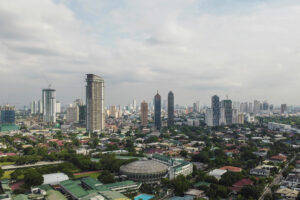Financial system resources grow by 8% as of Feb.

THE TOTAL RESOURCES of the Philippine financial system reached P30.869 trillion as of end-February, preliminary data from the Bangko Sentral ng Pilipinas (BSP) showed.
Resources of banks and nonbank financial institutions rose by 8% from P28.583 trillion in the same period a year ago.
Month on month, resources grew by 0.5% from P30.718 trillion as of end-January.
These resources include funds and assets such as deposits, capital, as well as bonds or debt securities.
Data from the central bank showed resources of banks increased by 9.5% to P25.752 trillion as of end-February from P23.526 trillion in the comparable year-ago period.
Broken down, total resources held by universal and commercial banks went up by 9.2% to P24.141 trillion as of February from P22.112 trillion a year prior.
Resources of thrift banks reached P1.09 trillion, higher by 7.7% from P1.012 trillion at end-February 2023.
Meanwhile, digital banks’ resources stood at P95 billion as of February. The BSP only started collecting data from digital lenders from March 2023 onwards.
There was no updated data for rural and cooperative banks, which held P426 billion resources as of end-September 2023.
Meanwhile, the resources of nonbank financial institutions was recorded at P5.117 trillion at end-September 2023.
Nonbanks include investment houses, finance companies, security dealers, pawnshops and lending companies.
Institutions such as nonstock savings and loan associations, credit card companies, private insurance firms, the Social Security System and the Government Service Insurance System are also considered nonbank financial institutions.
“The continued growth in financial resources, especially by banks, may be attributed to the continued growth in earnings, being among the most profitable industries in the country for many years despite and defying the COVID pandemic and other economic challenges in recent years,” Rizal Commercial Banking Corp. Chief Economist Michael L. Ricafort said in a Viber message.
He noted that profit growth rates in the banking industry have been mostly faster than gross domestic product (GDP) expansion.
“Thus, the capitalization of Philippine banks continued to grow amid hefty earnings as well as some local and foreign investments in recent years, resulting to much higher capital adequacy ratio compared to the minimum set by local and global regulators,” he added.
Most banks posted higher net earnings last year, with some even booking record-high profits boosted by elevated interest rates.
Meanwhile, Philippine GDP grew by 5.5% last year, slower than the 7.6% expansion in 2022 and short of the government’s 6-7% target. It was the weakest growth since 2020 when GDP contracted by 9.5% amid the strict lockdown. — Luisa Maria Jacinta C. Jocson




